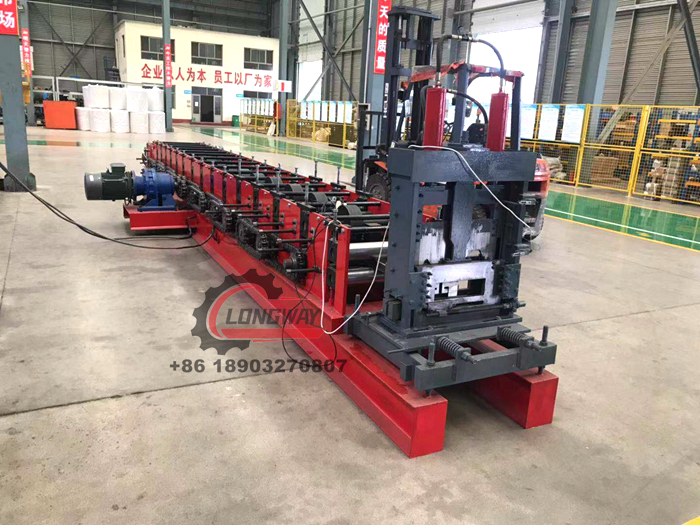cladding roll forming machine
Understanding Cladding Roll Forming Machines
In the realm of modern construction and manufacturing, the demand for efficient, high-quality building materials has surged. One crucial technology that meets this demand is the cladding roll forming machine. These advanced machines are revolutionizing the way architectural cladding is produced, providing solutions that are not only cost-effective but also environmentally sustainable. In this article, we will explore the functionality, benefits, and applications of cladding roll forming machines.
What is a Cladding Roll Forming Machine?
Cladding roll forming machines are specialized equipment designed to create metal cladding panels from continuous metal rolls. The process involves feeding metal sheets, usually made from steel or aluminum, through a series of rollers that gradually shape the material into the desired profile. This machine can produce various designs, including corrugated, flat, or architectural shapes, catering to a wide array of building styles and requirements.
The operation of a cladding roll forming machine is noteworthy for its precision and efficiency. The machine's rollers are engineered to control dimensions accurately, ensuring that each panel produced meets strict quality standards. Additionally, the machine can operate at high speeds, producing large quantities of cladding panels quickly, which is essential for meeting the demands of large-scale construction projects.
Benefits of Using Cladding Roll Forming Machines
1. Cost-Effectiveness One of the primary advantages of cladding roll forming machines is their ability to reduce manufacturing costs. By leveraging automated processes, labor costs can be significantly lowered. Moreover, the machines minimize waste material, optimizing the use of raw materials and usually leading to lower overall production costs.
2. Customization Cladding roll forming machines offer a high degree of customization. Manufacturers can easily alter the tooling to produce panels of different shapes, sizes, and finishes to suit specific project requirements. This functionality is essential in the architectural field, where design flexibility is crucial to meeting client specifications.
3. Durability and Quality The cladding produced by these machines is typically made from high-quality materials that offer excellent durability and weather resistance. This makes the final product suitable for various environmental conditions, enhancing the longevity of the building. Additionally, the precision of roll forming ensures that the cladding panels fit together perfectly, reducing the risks of leaks and structural issues over time.
cladding roll forming machine

4. Sustainability Using metal for cladding is an environmentally friendly option, as metals can be recycled without losing their properties. Moreover, the efficiency of cladding roll forming machines means that less energy is consumed during production compared to traditional methods, promoting a more sustainable approach to construction.
Applications of Cladding Roll Forming Machines
The versatility of cladding roll forming machines enables their use in numerous applications within the construction and manufacturing sectors.
- Commercial Buildings Architects often use metal cladding to enhance the aesthetic appeal and functionality of commercial spaces. Cladding can create striking façades while also offering insulation and protection.
- Industrial Structures Many industrial facilities utilize cladding to provide a robust and secure outer layer that can withstand harsh environmental conditions, thus protecting the underlying structure.
- Residential Homes Increasingly, homeowners are opting for metal cladding for its modern look and low maintenance needs. Cladding roll forming machines can produce customized panels that match individual architectural styles, adding to a home’s visual appeal.
- Public Infrastructure Infrastructure projects, such as schools, hospitals, and transportation hubs, also benefit from the use of metal cladding due to its durability and ease of maintenance.
Conclusion
Cladding roll forming machines represent a pivotal innovation in the construction industry, combining efficiency, cost savings, and design flexibility. With their ability to produce high-quality metal cladding for various applications, these machines play a significant role in modern architecture and construction. As the industry continues to evolve, the importance of such machines will undoubtedly grow, paving the way for more sustainable and aesthetically pleasing building solutions.
-
Roof Panel Machines: Buying Guide, Types, and PricingNewsJul.04, 2025
-
Purlin Machines: Types, Features, and Pricing GuideNewsJul.04, 2025
-
Metal Embossing Machines: Types, Applications, and Buying GuideNewsJul.04, 2025
-
Gutter Machines: Features, Types, and Cost BreakdownNewsJul.04, 2025
-
Cut to Length Line: Overview, Equipment, and Buying GuideNewsJul.04, 2025
-
Auto Stacker: Features, Applications, and Cost BreakdownNewsJul.04, 2025
-
Top Drywall Profile Machine Models for SaleNewsJun.05, 2025








